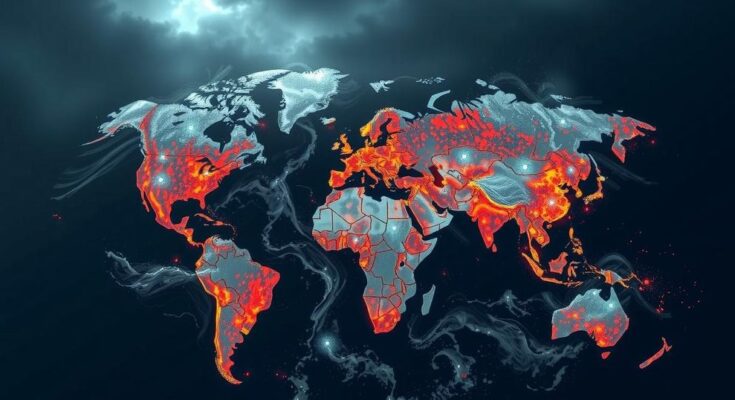Save the Children reports that one in eight children globally has been significantly affected by extreme weather events in 2024. Approximately 300 million children have faced severe impacts, including displacement and educational disruption. As COP29 convenes in Azerbaijan, the need for prioritizing children’s rights and voices in climate discussions becomes critical, particularly for those in low- and middle-income countries.
Approximately 300 million children, or 12.5% of the global child population, have been significantly affected by the ten most severe extreme weather events this year, according to Save the Children. As world leaders convene for the COP29 summit in Baku, Azerbaijan, the data reflects a pressing need to prioritize the rights and welfare of children in climate discussions. The analysis reveals that children from low- and middle-income nations face heightened disadvantages, including displacement, reliance on aid, and disrupted education, exacerbated by climate change’s increasing frequency of severe weather incidents. The notable extreme weather events include Tropical Storm Trami, which interrupted schooling for 19.5 million children in the Philippines, and a historically severe drought in Southern Africa causing 12.2 million children to require humanitarian aid. Flooding has displaced millions in West and Central Africa, while a heatwave in South Asia led to the closure of schools for 256 million children. As extreme weather events rise, the World Meteorological Organization concludes that their frequency has increased five-fold over the last five decades. Children like Kyariyam in Nigeria and Zinhle in Zimbabwe share personal accounts of their struggles due to these climate-induced disasters. Such narratives illustrate the broader impact of extreme weather on children’s education and mental well-being. Save the Children emphasizes that climate justice must be integral to the discourse at COP29, stating that the rights and vulnerabilities of children must be considered in climate finance and adaptation strategies.
The unprecedented climatic events of this year have profoundly impacted the world’s youth, particularly those from vulnerable backgrounds. As global leaders prepare for the COP29 conference, it is crucial to recognize the specific challenges faced by children, including displacement, inadequate educational opportunities, and reliance on humanitarian assistance. This demographic is not just experiencing immediate hardships but is also at risk of long-term developmental setbacks due to climate change. The data from Save the Children highlights urgent calls for action to integrate children’s issues into climate response mechanisms, ensuring their voices are heard during this critical global dialogue.
The impact of extreme weather on the youth is a pressing humanitarian concern that requires immediate, focused attention from global leaders. The challenges faced by the millions of children affected by these disasters underline the need for climate response strategies that prioritize their unique vulnerabilities. As the COP29 summit approaches, it is imperative that discussions surrounding climate finance include considerations for children’s rights, thereby fostering resilience and support systems in low- and middle-income countries.
Original Source: reliefweb.int




